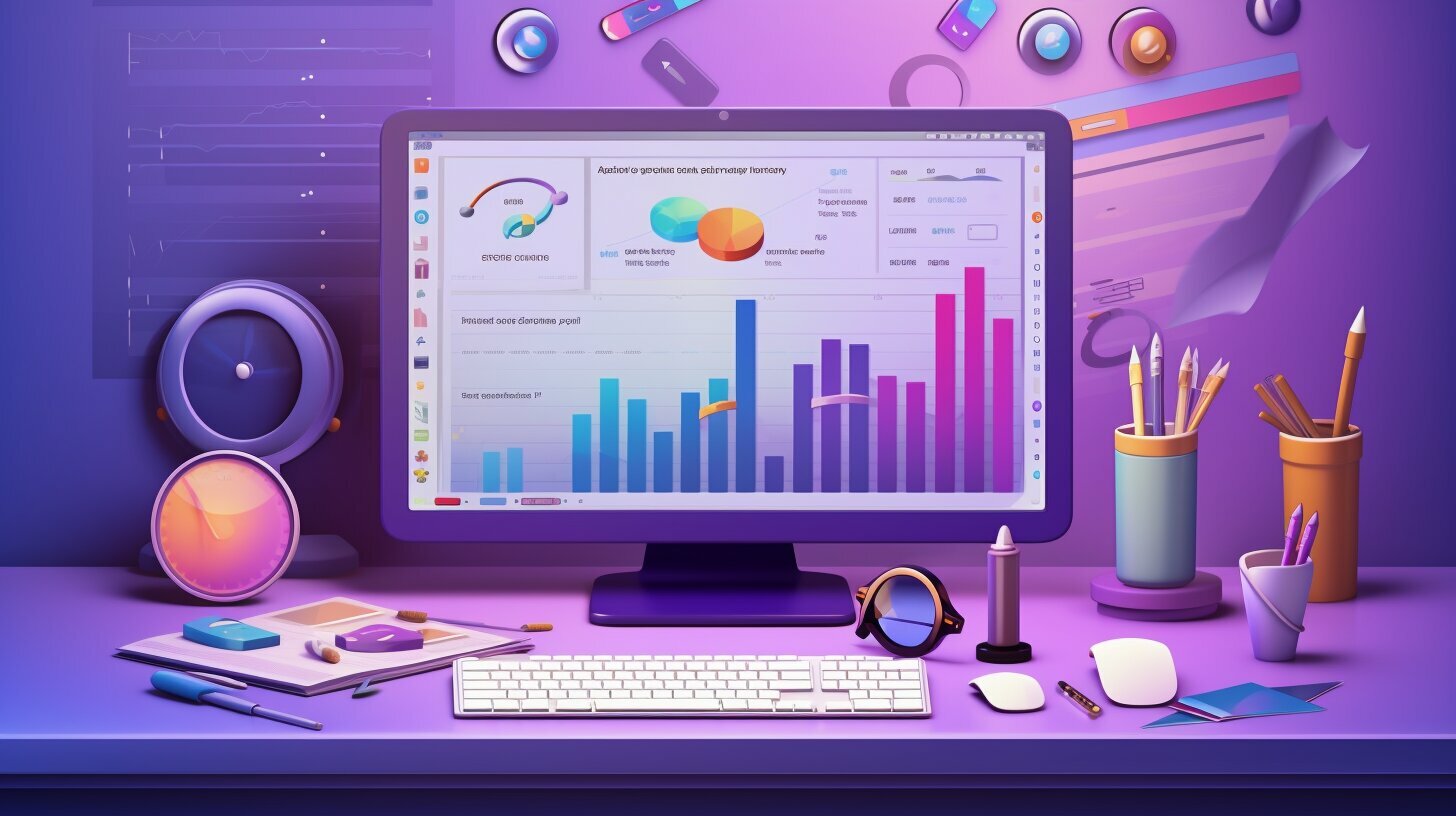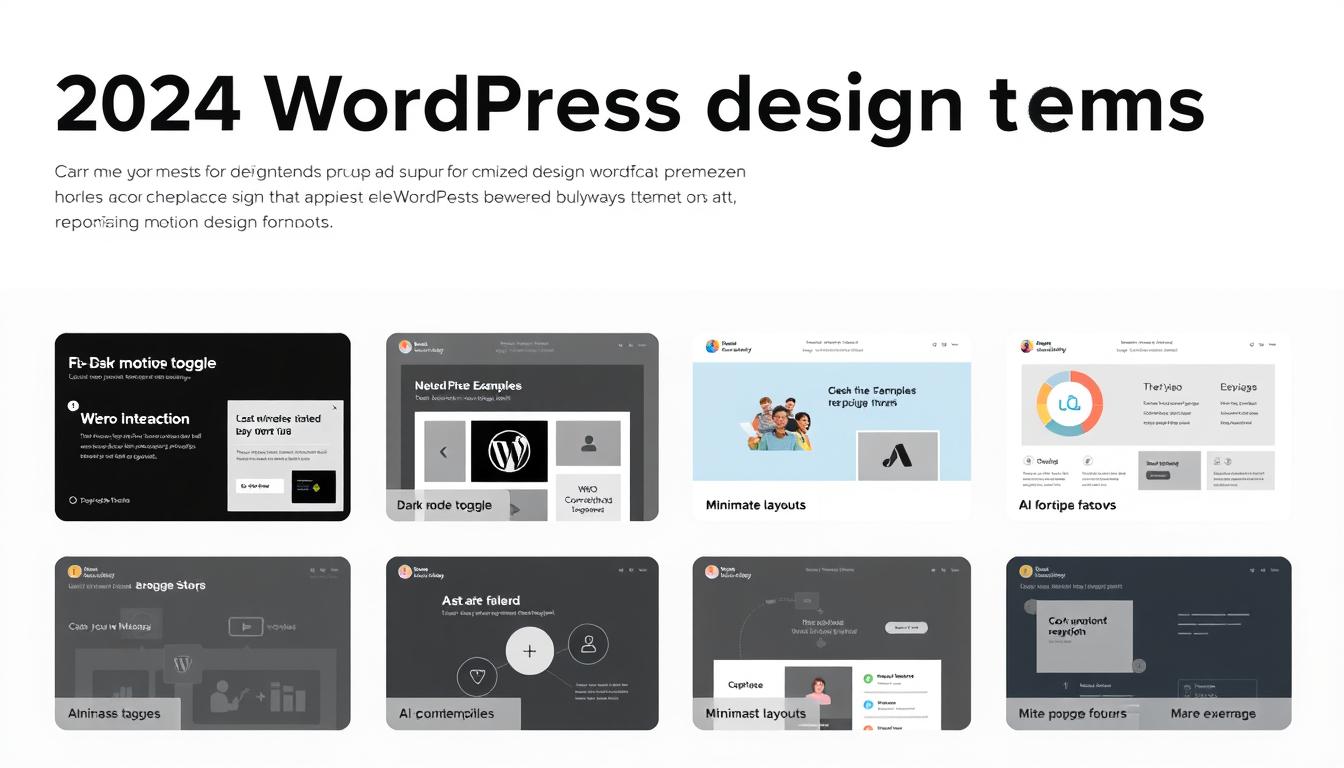Maximizing your impact with content creation and optimization requires a balance between creativity and logic. The creative side involves building unique and appealing content, while the logical side includes focusing on search engine optimization and reaching the right audience. Here are five actionable tips for efficient content creation:
Key Takeaways:
- Target high priority personas and buying stages to increase the impact of your content
- Repurpose large assets to create derivative content
- Develop workflows to improve content completion estimates
- Carve out time for brainstorming ideas at the beginning of each content creation term
- Use available resources to enhance your content creation process
Targeting High Priority Personas and Buying Stages for Increased Impact
To increase the impact of your content, it is crucial to target high priority personas and buying stages. By segmenting your customers based on demographics, you can create content that speaks directly to their needs at each stage of the buying journey.
Developing a content strategy that prioritizes high-quality content and organic traffic is essential for reaching your target audience. A successful content marketing strategy involves creating and distributing valuable, relevant, and consistent content to attract and retain a clearly defined audience.
By understanding your target audience and their needs, you can create content that is tailored to their interests and motivations. Targeting high priority personas, such as decision-makers and influencers, can help you reach the right people at the right time.
It is also important to consider the buying stages of your audience. Focus on creating content that addresses their specific needs at each stage of the journey, from awareness to consideration to decision-making.
By targeting high priority personas and buying stages, you can increase the impact of your content and drive more organic traffic to your website. Implementing a content marketing strategy that is based on these principles can help you achieve your goals and grow your business.
Repurposing Large Assets for Derivative Content
Maximizing your impact with content creation and optimization requires a balance between creativity and logic. The creative side involves building unique and appealing content, while the logical side includes focusing on search engine optimization and reaching the right audience. Repurposing large assets is a smart strategy for creating derivative content that can expand your reach and engage your audience in various ways. Here are some tips to help you get started:
Combine Text with Interactive Visuals
Infographics are a great way to present complex information in a clear and concise manner. You can also use videos, interactive tools, and animations to make your content more engaging and interactive. By combining text with visuals, you can bring your content to life and make it more appealing to your audience.
Summarize Information in Cheat Sheets
Cheat sheets are a great way to provide quick reference guides to complex information. By summarizing key points in a concise and easy-to-read format, you can create valuable content that your audience will appreciate.
Package Practical Information into eBooks
eBooks are a great way to package practical information into a comprehensive guide that your audience can use as a reference. You can repurpose existing content, such as blog posts, case studies, and white papers, to create an eBook that provides value to your audience.
Use Infographics to Grab Reader Attention
Infographics are a great way to present complex information in a clear and concise manner. By using visual elements such as charts, graphs, and images, you can make your content more engaging and easier to understand. Infographics are also highly shareable, which can help you expand your reach and drive traffic to your website.
Turn Blogs into Social Media Posts
When you create a blog post, you can repurpose it into a series of social media posts. By breaking down the content into smaller digestible chunks, you can create social media posts that are more shareable and engaging.
By repurposing large assets, you can create derivative content that expands your reach and engages your audience in various ways. Combining text with visuals, summarizing information in cheat sheets, packaging practical information into eBooks, using infographics to grab reader attention, and turning blogs into social media posts are just a few of the ways you can repurpose your content to create derivative content that provides value to your audience.
Developing Workflows for Efficient Content Creation
To ensure efficient content creation, it is crucial to develop workflows that improve completion estimates, visualize deadlines, and identify bottlenecks within the process. Creating a workflow will help streamline the content creation process and improve productivity, allowing for a more efficient process. The following are some best practices for creating workflows when developing content:
- Start with a clear content strategy that outlines your goals and target audience.
- Assign clear roles and responsibilities to team members involved in content creation.
- Establish a clear timeline for the entire content creation process, including deadlines for each stage.
- Use project management tools to keep track of progress and communicate with team members.
- Set up a review and approval process to ensure quality control and consistency.
By implementing these best practices, you can ensure that your content creation workflow is efficient, effective, and optimized for success.
Fuel Your Content Creation Process with Brainstorming Sessions
Maximizing your impact with content creation and optimization requires a balance between creativity and logic. The creative side involves building unique and appealing content, while the logical side includes focusing on search engine optimization and reaching the right audience. One way to fuel your creative side is by dedicating time to brainstorming sessions at the beginning of each content creation term.
Brainstorming is a powerful tool to generate new ideas and overcome creative blocks. By gathering your team together, you can generate a pool of epic ideas that your writers can choose from when creating content. During the brainstorming process, encourage free-thinking and collaboration to spark unique and innovative ideas. Make sure to document all ideas, even seemingly silly ones, to revisit later.
When brainstorming, consider your content strategy and the types of content that resonate with your target audience. Think about the pain points and challenges that your customers face, and brainstorm ways to address them in your content. By targeting high-priority personas and buying stages, you can create content that speaks directly to your customer’s needs at each stage of the buying journey.
Brainstorming sessions can also be an opportunity to evaluate existing content and identify areas for improvement. By analyzing strengths and weaknesses, you can pinpoint areas that need improvement and prioritize content creation activities to align with big-picture goals.
Incorporating brainstorming sessions into your content creation process can enhance your content marketing efforts and fuel your team’s creativity. By creating a consistent schedule for brainstorming, your team can generate fresh ideas and approach content creation with renewed energy and enthusiasm.
Enhancing Content Creation with Available Resources
Maximizing your impact with content creation and optimization requires a balance between creativity and logic. The creative side involves building unique and appealing content, while the logical side includes focusing on search engine optimization and reaching the right audience. Here are five actionable tips for efficient content creation:
- Target high priority personas and buying stages to increase the impact of your content. Segment your customers based on demographics and create content that speaks directly to their needs at each stage of the buying journey.
- Repurpose large assets to create derivative content. Combine text with interactive visuals, summarize information in cheat sheets, package practical information into eBooks, and use infographics to grab reader attention.
- Develop workflows to improve content completion estimates, visualize deadlines, and identify bottlenecks. This will streamline the content creation process and allow for efficient best practices.
- Carve out time for brainstorming ideas at the beginning of each content creation term. Generate a pool of epic ideas that your writers can choose from when creating content.
- Use available resources, such as research from reputable marketers, eBooks, infographics, and user-generated content, to enhance your content creation process.
In terms of content optimization, it is important to optimize your content for humans rather than search engine bots. By improving your content with a specific goal in mind, such as boosting search engine rankings or conversions, you can enhance its performance. Content optimization involves analyzing weaknesses and making strategic changes. Key steps for optimizing content include finding the right topic and keyword, selecting achievable keywords that meet search intent, and aligning content creation activities with big-picture goals.
Establishing a working process for content creation is crucial for success, as it minimizes process-oriented communications, improves resourcing and expectation-setting, allows creative team members to be more creative, and aligns content creation with goals. To optimize your content creation process, determine your goals using the SMART framework, establish a team of content creators including specialists and marketing team members, create a content calendar, conduct keyword research, plan and create content, review and revise, and measure and analyze the performance of your content.
Take advantage of the resources at your disposal to enhance your content creation process and deliver high-quality content to your audience.
Optimize Your Content for Humans, Not Just Search Engines
When optimizing your content, it is crucial to keep the focus on creating valuable content for your target audience, rather than solely catering to search engine bots. While search engine rankings are important, your ultimate goal should be to improve conversions and provide valuable information to your readers.
Content optimization involves analyzing the weaknesses in your current content and making strategic changes to improve its performance. Key steps for optimizing your content include finding the right topic and keyword, selecting achievable keywords that meet search intent, and aligning your content creation activities with big-picture goals.
To improve your content creation process, it’s important to establish a working process for efficient content creation. This will minimize process-oriented communications, improve resourcing and expectation-setting, allow creative team members to be more creative, and align content creation with goals. The SMART framework can be a useful tool for determining your goals and creating a plan to achieve them.
When optimizing your content, it’s important to remember that it’s not just about keywords and search engine rankings. Your content should be designed to provide value to your audience and encourage them to take action. By focusing on creating high-quality content that provides value to your readers, you’ll be able to improve your search engine rankings and increase conversions at the same time.
Key Steps for Optimizing Your Content
Optimizing your content involves a series of key steps that can improve its performance and achieve your desired goals. These steps begin with extensive keyword research, finding the right topic, and developing a content creation plan that aligns with your big-picture goals. This section outlines the key steps for optimizing your content, including keyword research, content creation, and goal setting.
Keyword Research
Keyword research is the foundation of content optimization. By identifying relevant and achievable keywords, you can improve your search engine ranking and increase organic traffic to your website. Begin by considering the search intent of your target audience, and identify specific keywords and long-tail phrases that align with your brand and content goals. Use keyword research tools, such as Google Keyword Planner, SEMrush, or Moz, to find relevant keywords with low competition and high search volume. Once you have identified your keywords, use them strategically in your content, title, headers, and meta description.
Content Creation
Creating high-quality content is an essential part of optimizing your content. Begin by choosing the right topic that aligns with your keyword research and target audience. Develop a content plan that outlines key themes, topics, and posting frequency. Craft content that is engaging, informative, and relevant, and that provides value to your target audience. Use headers, bullet points, and images to break up your content and make it easy to read. Finally, ensure that your content is optimized for SEO by using relevant keywords in the title, meta description, and throughout the content.
Big-Picture Goals
Aligning your content creation activities with your big-picture goals is crucial for achieving success. This involves defining your goals using the SMART framework (Specific, Measurable, Achievable, Relevant, and Time-bound), and developing a content creation plan that aligns with those goals. By setting clear targets and objectives, you can ensure that your content is targeted to the right audience, meets their needs, and achieves your desired outcome. To regularly measure your progress towards these goals, track key metrics such as website traffic, engagement, and conversion rates.
Optimizing your content involves detailed planning, keyword research, and a focus on your target audience. By following these steps, you can improve your search engine ranking, increase organic traffic, and achieve your big-picture goals.
Establishing an Efficient Content Creation Process
To ensure successful content creation, it is crucial to establish an efficient process that aligns with your goals and maximizes the impact of your efforts. With the SMART framework, you can define and set clear goals for your content creation process. This framework ensures that your goals are Specific, Measurable, Achievable, Relevant, and Time-bound.
The next step in establishing an efficient content creation process is to assemble a team of content creators. Your team should include a mix of specialists with diverse expertise and marketing team members who can provide insights into your target audience.
Create a content calendar to ensure that you are publishing content on a regular basis and in a timely manner. This will help you stay organized and ensure that you are meeting your goals. Conduct keyword research to determine what topics and keywords your target audience is searching for. This will help you create content that is relevant and useful to your audience and improves your search engine rankings.
Plan and create your content based on the insights you gained from your keyword research. Once your content is complete, review and revise it to ensure that it meets your quality standards. Finally, measure and analyze the performance of your content to determine what is working and what needs improvement.
Conclusion: The Power of Content Creation and Optimization
In conclusion, content creation and optimization are powerful tools that can significantly impact your online presence and drive meaningful results. By balancing creativity and logic, targeting high-priority personas and buying stages, repurposing large assets for derivative content, developing efficient workflows, boosting creativity with brainstorming sessions, and utilizing available resources, you can efficiently create high-quality content that speaks directly to your audience’s needs.
When it comes to content optimization, it’s crucial to optimize your content for humans rather than search engine bots. By aligning your content creation activities with big-picture goals and using key steps such as finding the right topic and keyword, creating achievable keywords that meet search intent, and measuring and analyzing performance, you can enhance the impact of your content on website optimization, search engine ranking, and organic traffic.
Establishing an efficient content creation process is also crucial for success. By using the SMART framework to determine your goals, creating a team of content creators, establishing a content calendar, conducting keyword research, planning and creating content, reviewing and revising, and measuring and analyzing performance, you can streamline your content creation process and drive meaningful results.
FAQ
Q: What does content creation and optimization involve?
A: Content creation and optimization involve balancing creativity and logical strategies to maximize the impact of your content. It includes creating unique and appealing content while also focusing on search engine optimization and reaching the right audience.
Q: How can I increase the impact of my content?
A: To increase the impact of your content, target high priority personas and buying stages. Segment your customers based on demographics and create content that speaks directly to their needs at each stage of the buying journey.
Q: How can I repurpose large assets for derivative content?
A: You can repurpose large assets by combining text with interactive visuals, summarizing information in cheat sheets, packaging practical information into eBooks, and using infographics to grab reader attention.
Q: How can I develop workflows for efficient content creation?
A: To develop workflows for efficient content creation, you can improve completion estimates, visualize deadlines, and identify bottlenecks. This will streamline the content creation process and allow for efficient best practices.
Q: How can I boost creativity with brainstorming sessions?
A: Carve out time for brainstorming ideas at the beginning of each content creation term. Generate a pool of epic ideas that your writers can choose from when creating content.
Q: How can I enhance content creation with available resources?
A: You can enhance content creation by using available resources such as research from reputable marketers, eBooks, infographics, and user-generated content.
Q: Should I optimize my content for humans or search engines?
A: It is important to optimize your content for humans rather than search engine bots. By improving your content with a specific goal in mind, such as boosting search engine rankings or conversions, you can enhance its performance.
Q: What are the key steps for optimizing content?
A: The key steps for optimizing content include finding the right topic and keyword, selecting achievable keywords that meet search intent, and aligning content creation activities with big-picture goals.
Q: How can I establish an efficient content creation process?
A: To establish an efficient content creation process, determine your goals using the SMART framework, establish a team of content creators including specialists and marketing team members, create a content calendar, conduct keyword research, plan and create content, review and revise, and measure and analyze the performance of your content.
Q: What is the power of content creation and optimization?
A: Content creation and optimization have the power to maximize your website’s optimization, improve search engine rankings, and drive organic traffic to your site.






